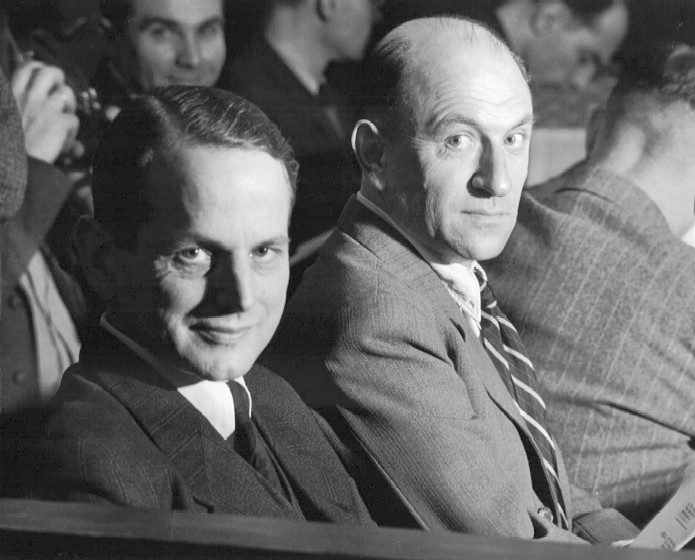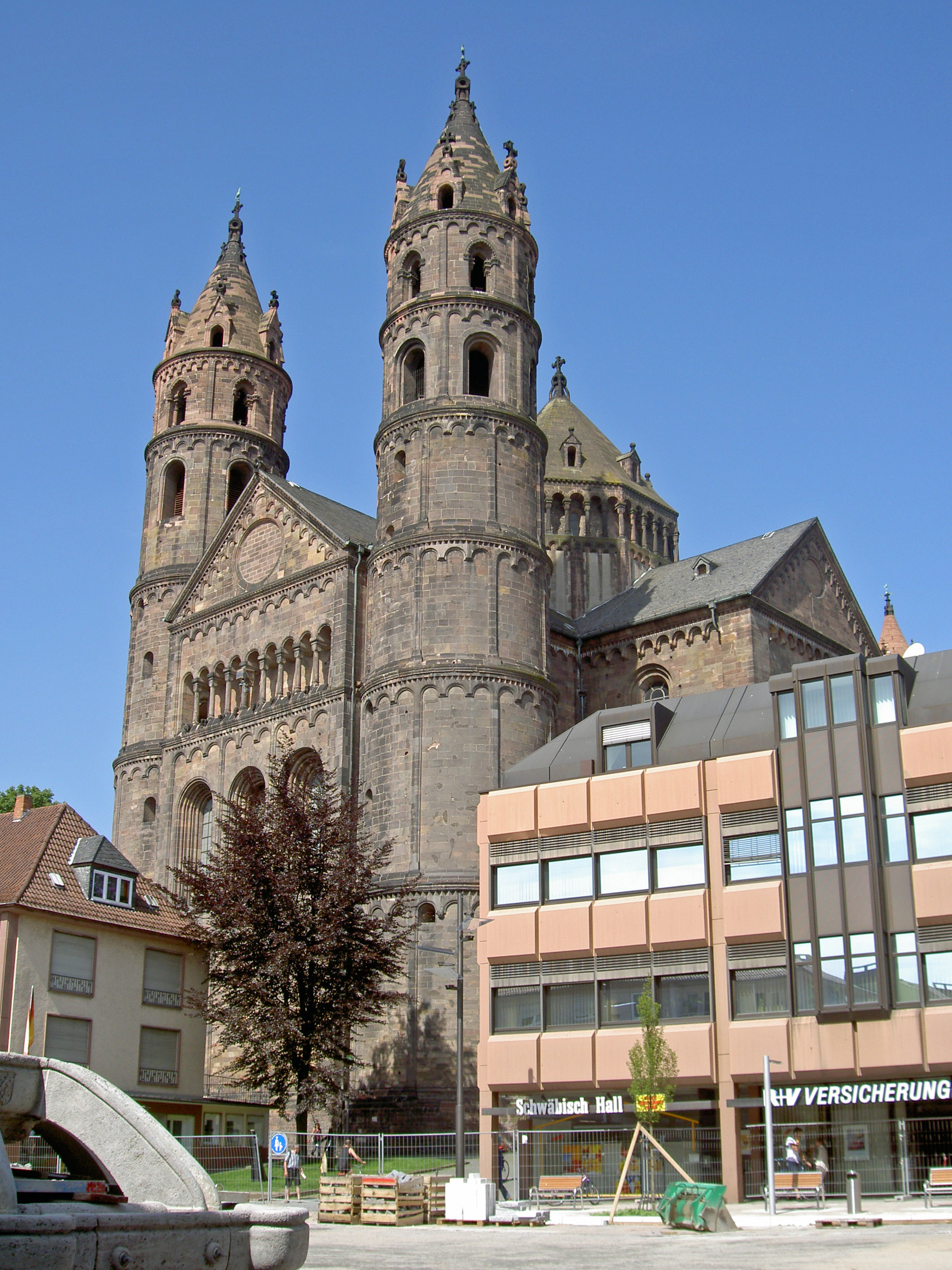|
Heinz Jost
Heinz Jost (9 July 1904 – 12 November 1964) was a German SS functionary during the Nazi era. He was involved in espionage matters as the ''Sicherheitsdienst'' (Security Service) or (SD) section chief of office VI (foreign intelligence) of the Reich Security Main Office. Jost was responsible for genocide in eastern Europe as commander of ''Einsatzgruppe'' A from March–September 1942. After Germany's defeat, Jost was tried and convicted by a U.S. military court at the Einsatzgruppen trial. In December 1951, Jost was released from Landsberg Prison after his sentence was commuted to ten years and died in 1964. Early life Heinz Jost was born in the northern Hessian Homberg (Efze) - Ortsteil Holzhausen - in Hersfeld in 1904, to a middle-class Catholic and nationalistic family.The Nuremberg SS-Einsatzgruppen Trial, 1945-1958: Atrocity, Law, And History. Hilary Earl. Cambridge University Press, 2009. p. 115. Heinrich Jost, Heinz's father, was a pharmacist and later became ... [...More Info...] [...Related Items...] OR: [Wikipedia] [Google] [Baidu] |
Nuremberg Military Tribunal
The subsequent Nuremberg trials were a series of 12 military tribunals for war crimes against members of the leadership of Nazi Germany between December 1946 and April 1949. They followed the first and best-known Nuremberg trial before the International Military Tribunal which concluded in October 1946. In contrast, the subsequent trials were conducted before U.S. military courts rather than an international court. They are also collectively known as the Nuremberg Military Tribunals. These trials dealt with German industrialists accused of using slave labor and plundering occupied countries, and high-ranking army officers accused of atrocities against prisoners of war. The subsequent trials were held in the same location, at the Palace of Justice in Nuremberg. Background Although it had been initially planned to hold more than just one international trial at the IMT, the growing differences between the victors of the second world war (the United States, United Kingdom, Franc ... [...More Info...] [...Related Items...] OR: [Wikipedia] [Google] [Baidu] |
Reinhard Heydrich
Reinhard Tristan Eugen Heydrich ( ; ; 7 March 1904 – 4 June 1942) was a high-ranking German SS and police official during the Nazi era and a principal architect of the Holocaust. He was chief of the Reich Security Main Office (including the Gestapo, Kripo, and SD). He was also ''Stellvertretender Reichsprotektor'' (Deputy/Acting Reich-Protector) of Bohemia and Moravia. He served as president of the International Criminal Police Commission (ICPC, now known as Interpol) and chaired the January 1942 Wannsee Conference which formalised plans for the "Final Solution to the Jewish question"—the deportation and genocide of all Jews in German-occupied Europe. Many historians regard Heydrich as the darkest figure within the Nazi regime; Adolf Hitler described him as "the man with the iron heart". He was the founding head of the '' Sicherheitsdienst'' (Security Service, SD), an intelligence organisation charged with seeking out and neutralising resistance to the Nazi ... [...More Info...] [...Related Items...] OR: [Wikipedia] [Google] [Baidu] |
Gerald Reitlinger
Gerald Roberts Reitlinger (born 1900 in London, United Kingdom – died 1978 in St Leonards-on-Sea, United Kingdom) was an art historian, especially of Asian ceramics, and a scholar of historical changes in taste in art and their reflection in art prices. After World War II he wrote three large books about Nazi Germany. He was also a painter and collector, mainly of pottery. Reitlinger's major works were ''The Final Solution'' (1953), ''The SS: Alibi of a Nation'' (1956), and between 1961–1970 he published ''The Economics of Taste'' in three volumes. Career Born in London to the banker Albert Reitlinger and his wife Emma Brunner, Reitlinger was educated at Westminster School in London before a short service with the Middlesex Regiment at the end of World War I. He then studied history, concentrating on art history, at Christ Church, University of Oxford and later at the Slade School and Westminster School of Art, during which time he also edited ''Drawing and Design'', ... [...More Info...] [...Related Items...] OR: [Wikipedia] [Google] [Baidu] |
Werner Best
Karl Rudolf Werner Best (10 July 1903 – 23 June 1989) was a German jurist, police chief, SS-''Obergruppenführer'', Nazi Party leader, and theoretician from Darmstadt. He was the first chief of Department 1 of the Gestapo, Nazi Germany's secret police, and initiated a registry of all Jews in Germany. As a deputy of SS-''Obergruppenführer'' Reinhard Heydrich, he organized the World War II SS-''Einsatzgruppen'', paramilitary death squads that carried out mass-murder in Nazi-occupied territories. Best served in the German military occupation administration of France (1940–1942), and then became the civilian administrator of occupied Denmark (1942–1945). Convicted of war crimes in Denmark, Best was released in 1951. He escaped further prosecution in West Germany in 1972 due to ill health and died in 1989, aged 85. Early life Werner Best was born on 10 July 1903 in Darmstadt, Hesse, but his parents moved to Dortmund when he was nine before settling in Mainz, where he completed ... [...More Info...] [...Related Items...] OR: [Wikipedia] [Google] [Baidu] |
Giessen
Giessen, spelled Gießen in German (), is a town in the German state (''Bundesland'') of Hesse, capital of both the district of Giessen and the administrative region of Giessen. The population is approximately 90,000, with roughly 37,000 university students. The name comes from ''Giezzen'', as it was first referred to in 1197, which refers to the position of the town between several rivers, lakes and streams. The largest river in Giessen is the Lahn, which divides the town in two parts (west and east), roughly north of Frankfurt am Main. Giessen is also home to the University of Giessen. In 1969, the town hosted the ninth '' Hessentag'' state festival. History Giessen came into being as a moated castle in 1152 built by Count Wilhelm von Gleiberg, although the history of the community in the northeast and in today's suburb called "Wieseck" dates back to 775. The town became part of Hesse-Marburg in 1567, passing to Hesse-Darmstadt in 1604. The University of Giessen was foun ... [...More Info...] [...Related Items...] OR: [Wikipedia] [Google] [Baidu] |
Worms, Germany
Worms () is a city in Rhineland-Palatinate, Germany, situated on the Upper Rhine about south-southwest of Frankfurt am Main. It had about 82,000 inhabitants . A pre-Roman foundation, Worms is one of the oldest cities in northern Europe. It was the capital of the Kingdom of the Burgundians in the early fifth century, hence is the scene of the medieval legends referring to this period, notably the first part of the ''Nibelungenlied''. Worms has been a Roman Catholic bishopric since at least 614, and was an important palatinate of Charlemagne. Worms Cathedral is one of the imperial cathedrals and among the finest examples of Romanesque architecture in Germany. Worms prospered in the High Middle Ages as an imperial free city. Among more than a hundred imperial diets held at Worms, the Diet of 1521 (commonly known as ''the'' Diet of Worms) ended with the Edict of Worms, in which Martin Luther was declared a heretic. Worms is also one of the historical ShUM-cities as a cultur ... [...More Info...] [...Related Items...] OR: [Wikipedia] [Google] [Baidu] |
Lorsch
Lorsch is a town in the Bergstraße district in Hessen, Germany, 60 km south of Frankfurt. Lorsch is well known for the Lorsch Abbey, which has been named a World Heritage Site by UNESCO. Geography Location Lorsch lies about 5 km west of the '' Bergstraße'' in the Rhine rift just west of the Odenwald between Darmstadt to the north and Mannheim to the south. The town lies not far from the Weschnitz's lower reaches. To the town's southeast the Weschnitzinsel conservation area is located. Neighbouring communities Lorsch borders in the north on the community of Einhausen and the town of Bensheim, in the east on the town of Heppenheim, in the southeast on the community of Laudenbach and the town of Hemsbach (both in Rhein-Neckar-Kreis, Baden-Württemberg), in the south on the town of Lampertheim and in the west on the town of Bürstadt. History Lorsch Abbey (German: ''Kloster Lorsch'') was founded in 764 by the Frankish Count Cancor and his mother Williswinda. Th ... [...More Info...] [...Related Items...] OR: [Wikipedia] [Google] [Baidu] |
Nazi Party
The Nazi Party, officially the National Socialist German Workers' Party (german: Nationalsozialistische Deutsche Arbeiterpartei or NSDAP), was a far-right political party in Germany active between 1920 and 1945 that created and supported the ideology of Nazism. Its precursor, the German Workers' Party (; DAP), existed from 1919 to 1920. The Nazi Party emerged from the extremist German nationalist, racist and populist paramilitary culture, which fought against the communist uprisings in post– World War I Germany. The party was created to draw workers away from communism and into nationalism. Initially, Nazi political strategy focused on anti– big business, anti-bourgeois, and anti-capitalist rhetoric. This was later downplayed to gain the support of business leaders, and in the 1930s, the party's main focus shifted to antisemitic and anti-Marxist themes. The party had little popular support until the Great Depression. Pseudoscientific racist theories were ... [...More Info...] [...Related Items...] OR: [Wikipedia] [Google] [Baidu] |
University Of Munich
The Ludwig Maximilian University of Munich (simply University of Munich or LMU; german: link=no, Ludwig-Maximilians-Universität München) is a public research university in Munich, Bavaria, Germany. Originally established as the University of Ingolstadt in 1472 by Duke Ludwig IX of Bavaria-Landshut, it is Germany's sixth-oldest university in continuous operation. In 1800, the university was moved from Ingolstadt to Landshut by King Maximilian I Joseph of Bavaria when the city was threatened by the French, before being transferred to its present-day location in Munich in 1826 by King Ludwig I of Bavaria. In 1802, the university was officially named Ludwig-Maximilians-Universität by King Maximilian I of Bavaria in honor of himself and Ludwig IX. LMU is currently the second-largest university in Germany in terms of student population; in the 2018/19 winter semester, the university had a total of 51,606 matriculated students. Of these, 9,424 were freshmen, while international ... [...More Info...] [...Related Items...] OR: [Wikipedia] [Google] [Baidu] |
University Of Giessen
University of Giessen, official name Justus Liebig University Giessen (german: Justus-Liebig-Universität Gießen), is a large public research university in Giessen, Hesse, Germany. It is named after its most famous faculty member, Justus von Liebig, the founder of modern agricultural chemistry and inventor of artificial fertiliser. It covers the areas of arts/humanities, business, dentistry, economics, law, medicine, science, social sciences, and veterinary medicine. Its university hospital, which has two sites, Giessen and Marburg (the latter of which is the teaching hospital of the University of Marburg), is the only private university hospital in Germany. History The University of Giessen is among the oldest institutions of higher educations in the German-speaking world. It was founded in 1607 as a Lutheran university in the city of Giessen in Hesse-Darmstadt because the all-Hessian ''Landesuniversität'' (the nearby University of Marburg (''Philipps-Universität Marbur ... [...More Info...] [...Related Items...] OR: [Wikipedia] [Google] [Baidu] |
Young German Order
The Young German Order (in German , often abbreviated as ) was a large para-military organisation in Weimar Germany. Its name and symbol (see picture) were inspired by the Teutonic Knights ( in German). The pseudo-chivalric group was involved in nationalistic German politics. Its youth organisation was called ( Young German Youth). Jungdo's political arm, the ( People's National Reich Association) merged with the German Democratic Party and parts of the Christian Social People's Service in 1930 to become the German State Party. The group was founded by Artur Mahraun in May 1920 in Kassel. The organisation tried to revive ideals of the pre-war Wandervogel youth movement. Very soon it reached 70,000 members, although it was temporarily banned in early 1921, and being the largest of the many para-military groups in the 1920s, it later expanded to almost 300,000 members. In 1933 it was banned by the Nazi Nazism ( ; german: Nazismus), the common name in English for Natio ... [...More Info...] [...Related Items...] OR: [Wikipedia] [Google] [Baidu] |


.jpg)
_Christopher_Wood%2C_1926_wa_1978_51as.jpg)
_(2).jpg)

